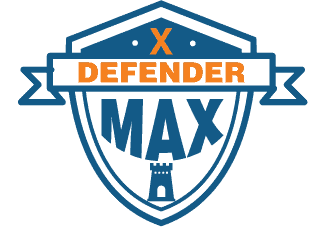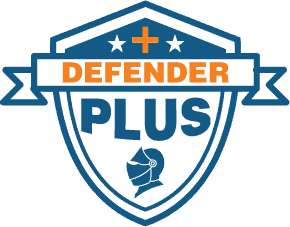A comprehensive business insurance plan must include errors and omissions (E&O) coverage. But how well do you understand its role and the types of claims it covers? This article will provide you with a fresh perspective on E&O insurance, real-life e&o policy claim examples, and actionable tips on protecting your business from potential claims. Buckle up and get ready to become an E&O insurance expert!
Short Summary
- Errors and omissions insurance is essential for businesses to protect against financial losses due to professional mistakes.
- Real-life examples of E&O policy claims can illustrate the potential risks faced by businesses, and proactive measures such as establishing clear contracts are key in protecting them from these risks.
- Customizing an E&O insurance policy requires assessing risks, selecting endorsements, and regularly reviewing coverage.
Understanding E&O Policy Claims
Professional liability insurance provides protection against claims resulting from negligence, oversights, or mistakes during the provision of professional services.This type of insurance is essential for businesses as it covers legal fees, court costs, and even settlements or judgments, allowing businesses to focus on their operations without the constant fear of financial ruin due to a costly lawsuit. For a comprehensive insurance program, businesses should also consider general liability insurance in addition to errors and omissions insurance. A business owners package policy (aka BOP) often can include E&O insurance. In many cases this can minimize the cost. Understanding the insurance costs is crucial for businesses to make informed decisions about their insurance needs.
Having this type of insurance contract in place can provide peace of mind, help businesses operate with confidence, and manage their insurance costs cost effectively.
Why Buy E&O?
E&O insurance plays a pivotal role in shielding businesses from the financial consequences of professional errors and omissions. For example, if a client files a covered claim against your business, your insurer will provide expert defense, offer guidance throughout the legal and insurance processes, usually pay the indemnity for which you are liable and remain accessible until resolution.
Companies operating in industries like management consulting, process serving, professional service, property management, or real estate can greatly benefit from having E&O insurance in place.
Real-Life E&O Policy Claim Examples
Understanding real-life examples of E&O policy claims can help underscore the importance of having adequate coverage. In the following sections, we’ll explore E&O claim scenarios involving financial advisors, insurance agents, real estate agents, and architects to showcase the potential risks businesses face and the value of having a comprehensive E&O insurance policy.
These scenarios can help illustrate the importance of having an E&O policy in place to protect you and your clients.
Financial advisors
Financial advisors are not immune to E&O claims, as they may face allegations of negligence in providing advice that caused a financial loss to the client or a misrepresentation of their qualifications or services. For instance, inadequate communication and documentation could result in a client not comprehending the advice they receive or being unaware of the associated risks of a particular investment, leading to financial loss and a potential E&O claim against the financial advisor.
E&O insurance can help protect financial advisors from such claims, with the cost depending on factors like the size of the business, industry, and claims history.
Real estate agents
In the world of real estate, agents may face E&O claims due to:
- Liability for concealment of property defects
- Negligence in providing advice that led to a financial loss for the client
- Misrepresentation of their qualifications or services
- Providing false or misleading information regarding a property
- Referral to unqualified professionals, such as home inspection
Failure to disclose pertinent information about a property can also lead to an E&O claim. Having E&O insurance in place can help cover the legal defense costs associated with these claims, allowing real estate agents to focus on their core business operations.
Architects and engineers
Architects and engineers are also at risk of facing E&O, claims filed due to design errors and omissions, construction errors, or project delays that result in financial losses for clients. In such cases, the potential financial losses could include costs for rectifying faulty designs, extra labor costs, and legal fees.
Errors and Omissions insurance can mitigate these risks and protect architects and engineers from the financial consequences of such claims, allowing them to focus on delivering high-quality work.
How to Protect Your Business from E&O Claims
While having E&O insurance in place is essential, it’s also crucial to take proactive measures to protect your business from potential claims. In this section, we will discuss some practical tips for safeguarding your business, including:
Establishing clear contracts: Contracts should be written in plain language and should clearly outline the expectations of both parties.
Providing regular training and education: Training and educating your staff is critical. It’s also important to stay current with new regulations, laws and the evolving standard of care in your industry.
Establishing clear contracts
Clear contracts are integral to setting expectations and defining the scope of work between your business and clients. This can help reduce the likelihood of misunderstandings that could lead to E&O claims. A comprehensive written contract should include the scope of services, payment terms, and any other pertinent information.
Additionally, there should be a clause that delineates the client’s responsibility for any errors or omissions that may arise for which they are responsible. Ensuring clarity in your contracts can go a long way in minimizing the risk of E&O claims.
Regular training and education
Regular training and education are vital in ensuring that your employees stay up-to-date with industry standards and best practices, thereby less errors and minimizing the risk of professional mistakes that could lead to E&O claims. Courses and certifications that include guidance to help minimize errors, thereby reducing the cost of many types of business. related to E&O insurance, include:
- Certified Professional Liability Underwriter (CPLU) certification
- Professional Liability Underwriting Society (PLUS) certification
- Risk and Insurance Management Society (RIMS) certification
These certifications can help insurance professionals stay informed of the legal concepts and terms associated with E&O insurance, typical claims as well as potential risks associated with it.
These certifications can help insurance professionals understand the complexities of E&O insurance. With this knowledge, they can help their customers avoid claims, buy the proper E&O insurance to best protect their business.
Implementing risk management strategies
Implementing risk management strategies can help prevent E&O claims from arising. Some effective risk management strategies include:
- Vetting clients
- Developing clear contracts
- Maintaining effective communication
- Keeping proper documentation
- Screening employees and third-party vendors
- Staying abreast of licensing, education, and training requirements
- Having a review process
It is possible to minimize the risk of errors and omissions claims by implementing these strategies.
Additionally, standard policies, procedures, and checklist can be beneficial in minimizing an identifying any potential risks that may result in an E&O claim. By incorporating these risk management strategies, you can significantly reduce your business’s exposure to E&O claims.
Navigating the E&O Claims Process
Dealing with an E&O claim can be a complex and daunting experience. In this section, we will guide you through the E&O claims process, from reporting the claim to your own insurance company or provider, working with legal counsel, and ultimately settling or litigating the claim.
Reporting the claim to your insurance provider is the first step in the process. You should provide the information:
- Claimant info
- How you became aware of the situation
- Description of the circumstances leading up to the matter and allegations
- Dates of services provided (range)
- Your possible defenses
- Amount of potential damages the client suffered
Reporting the claim
Promptly reporting the claim to your insurance provider is critical to ensure timely coverage and support throughout the claims process. Begin by reviewing your policy and familiarizing yourself with the terms and conditions, as well as any exclusions or restrictions that may be applicable.
Usually you must report the claim before the expiration of the policy. Contact your insurance provider and submit the claim in writing, along with any pertinent documentation. The sooner you report the claim, the better positioned you’ll be to receive the necessary assistance and guidance from your insurer.
Keep in mind: Never hire an outside attorney, admit wrong doing, make a settlement, or incur any expenses without the consent of the insurer. Doing so can negate coverage altogether.
Working with legal counsel
Working with legal counsel provided by your insurer can help you navigate the complexities of E&O claims and develop a strong defense strategy while managing legal expenses. The process of working with legal counsel typically begins with an initial consultation to discuss the details of the E&O claim. The purpose of the consultation with the attorney is to determine the best path forward to maximize your defense.
Collaboration with your attorney is essential in developing a defense strategy and representing you in any legal proceedings.
Settling or litigating the claim
Depending on the circumstances, settling or litigating the claim may be the best course of action. From the perspective of the claimant, settling may be advantageous if:
- The defendant and their insurance company’s legal representatives are inclined to provide the entire compensation sought
- From the perspective of the defendant, settling permits additional negotiation
- Settling can be cost-effective and expedient, and most often paid by the insurer
- Closure allows you to get back to business
However, litigating may result in a better outcome for you, but it is unpredictable and can be more costly. Your legal counsel and your insurer will consult together to make a decision to settle or litigate an E&O claim.
Customizing Your E&O Insurance Policy
Every business is unique, and so are its insurance needs. In this section, we will discuss how you can customize your E&O insurance policy to suit the specific requirements of your business. This includes assessing your risks, selecting policy endorsements, and regularly reviewing and updating your coverage.
Assessing your risks is an important step in determining the type and amount of coverage you need.
Assessing your risks
Assessing your risks involves identifying potential sources of E&O liability claims in your industry and tailoring your coverage to address those risks. It’s essential to be aware of the most significant risks to evaluate for E&O insurance, such as errors or omissions in providing professional services, the delivery of defective products and services, or failure to acquire/sustain appropriate coverage.
Familiarize yourself with any specific exclusions in E&O policies and assess potential sources of E&O claims in your industry to ensure your coverage addresses these risks adequately.
Can You Customize Your E&O Coverage?
To extend or modify existing coverage, an insurance policy can be endorsed with additional provisions. Policy endorsements can enhance your E&O insurance coverage by adding specific protections relevant to your business, such as cyber liability, additional insureds, or professional services endorsements. These endorsements can also modify troublesome exclusions.
By carefully selecting the right endorsements, you can create an E&O insurance policy that is tailored to the unique needs of your small business.
Reviewing and updating coverage
Regularly reviewing and updating your E&O insurance coverage with your broker is crucial to ensure that your policy remains adequate as your business evolves and faces new risks. When reviewing your policy, consider any changes in the policy language, coverage limits, and exclusions.
Be sure to contact your insurance provider and request a review of the policy, as well as inquire about any modifications that have been applied since its last review. By staying vigilant and keeping your E&O insurance policy up-to-date, you can protect your business from unforeseen risks and costly claims.
Summary
In conclusion, a comprehensive understanding of E&O insurance, its role, types of claims, and real-life examples is vital for businesses to protect themselves from potential financial losses. By establishing clear contracts, providing regular training and education, implementing risk management strategies, and customizing your E&O insurance policy, you can safeguard your business from costly E&O claims and focus on what matters most – growing and nurturing your business.
Frequently Asked Questions
What is the most common E&O claim?
Breach of contract is the most common E&O claim, followed by breaches of fiduciary duty, warranties, fraud, negligence and misrepresentation.
What is a claim in an E&O policy?
A claim in an E&O policy usually refers to a demand for monetary damages (emails, letters, or phone calls) lawsuit by a client resulting from alleged or actual professional mistakes, oversights, or negligent acts that caused financial harm.
This type of insurance can help cover legal fees, settlements and court costs associated with the claim.
Potential claims should also be reported. In fact, if you have knowledge of a circumstance and fail to report it, it will likely be denied if reported in the following policy period.
How do I make an E&O claim?
To make an E&O claim, review your policy, contact your insurance agent or carrier, ask questions, gather relevant records, and work with the defense team.
Limit your interactions with the claimant and don’t beat yourself up. It’s business, not personal.
What is something that an E&O policy can cover?
Errors and omissions insurance policy (E&O) is a type of professional liability insurance that provides protection against claims made by clients for inadequate work, negligence, mistakes, misrepresentation or similar allegations. It can help cover court costs or settlements if a client sues your business for these types of errors.
What is D&O and E&O policy?
D&O (Directors and Officers) insurance is designed to protect high-level decision makers from negligence claims from shareholders, while E&O (Errors and Omissions) insurance covers the company’s officers, directors and employees from claims from clients alleging wrongful acts, errors, or omissions. Together, these two policies provide necessary protection and assurance for businesses





